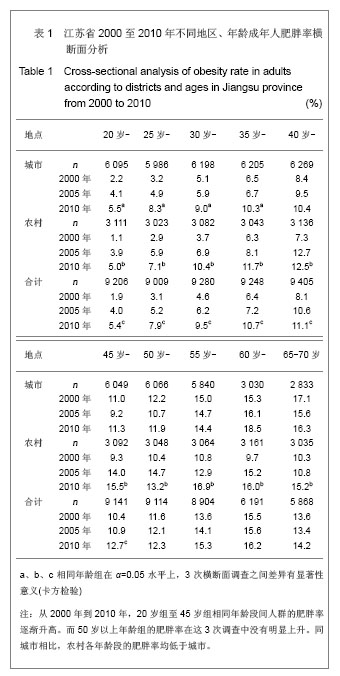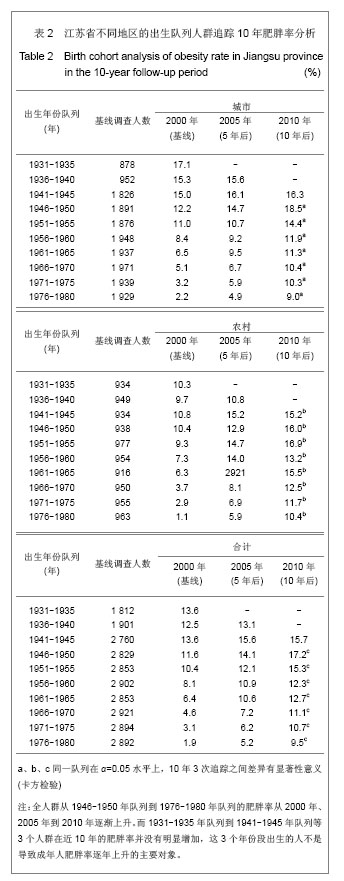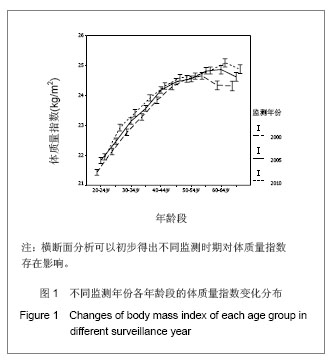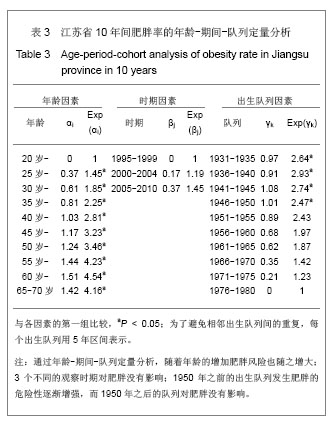| [1]Must A, Jacques PF, Dallal GE,et al. Long-term morbidity and mortality of overweight adolescents. A follow-up of the Harvard Growth Study of 1922 to 1935. N Engl J Med. 1992; 327(19):1350-1355.
[2]Berenson GS, Srinivasan SR, Bao W,et al. Association between multiple cardiovascular risk factors and atherosclerosis in children and young adults. The Bogalusa Heart Study. N Engl J Med. 1998;338(23):1650-1656.
[3]Mahoney LT, Burns TL, Stanford W,et al. Coronary risk factors measured in childhood and young adult life are associated with coronary artery calcification in young adults: the Muscatine Study. J Am Coll Cardiol. 1996;27(2):277-284.
[4]Katzmarzyk PT, Janssen I, Ross R,et al.The importance of waist circumference in the definition of metabolic syndrome: prospective analyses of mortality in men. Diabetes Care. 2006;29(2):404-409.
[5]Li C, Ford ES, McGuire LC,et al. Increasing trends in waist circumference and abdominal obesity among US adults. Obesity (Silver Spring). 2007;15(1):216-224.
[6]王惠君,翟凤英,杜树发,等. 1989~2000年中国九省成人体质指数分布的变化[J]. 卫生研究, 2006, 35(6): 794-797.
[7]Kupper LL, Janis JM, Karmous A,et al. Statistical age-period-cohort analysis: a review and critique. J Chronic Dis. 1985;38(10):811-830.
[8]Arbyn M,Van Oyen H,Sartor F,et al. Description of the influence of age,period and cohort effects on cervical cancer mortality by loglinear poisson models. Archives of Public Health. 2002;60(2):73-100.
[9]Aitkin M, Anderson D, Francis B, et al. Statistical modeling in GLM [M] . Oxford: Oxford University Press, 1989.
[10]武阳丰,马冠生,胡永华,等.中国居民的超重和肥胖流行现状[J].中华预防医学杂志, 2005,39(5):316-320.
[11]覃羽乔,徐永芳,梁桂民,等.超重和肥胖与高血压、糖尿病的关系[J].中国公共卫生,2004,20(6):656-658.
[12]Hu FB, Manson JE, Stampfer MJ,et al. Diet, lifestyle, and the risk of type 2 diabetes mellitus in women. N Engl J Med. 2001; 345(11):790-797.
[13]中国肥胖问题工作组. 中国学龄儿童青少年超重、肥胖筛查体重指数值分类标准[J]. 中华流行病学杂志, 2004, 25(2): 97-102.
[14]郭凤云,路紫. 基于空间分析方法的疾病地理研究进展[J].地理信息世界,2009,7(6):22-26.
[15]Carstensen B. Age-period-cohort models for the Lexis diagram. Stat Med. 2007;26(15):3018-3045.
[16]Hilbe JM. Generalized linear models. American Statistician. 1994;48(3):255-265.
[17]Lahti-Koski M, Pietinen P, Heliövaara M,et al. Associations of body mass index and obesity with physical activity, food choices, alcohol intake, and smoking in the 1982-1997 FINRISK Studies. Am J Clin Nutr. 2002;75(5): 809-817.
[18]Shen J, Goyal A, Sperling L.The emerging epidemic of obesity, diabetes, and the metabolic syndrome in china. Cardiol Res Pract. 2012;2012:178675.
[19]World Bank. World Bank Development Indicators 2011. Washington, DC,USA, 2011.
[20]Bell AC, Ge K, Popkin BM.The road to obesity or the path to prevention: motorized transportation and obesity in China. Obes Res. 2002;10(4):277-283.
[21]Bauman AE, Reis RS, Sallis JF,et al. Correlates of physical activity: why are some people physically active and others not. Lancet. 2012;380(9838):258-271.
[22]Breland JY, Fox AM, Horowitz CR,et al. Applying a common-sense approach to fighting obesity. J Obes. 2012; 2012:710427.
[23]Heath GW, Parra DC, Sarmiento OL,et al. Evidence-based intervention in physical activity: lessons from around the world. Lancet. 2012;380(9838):272-281.
[24]James WP. The fundamental drivers of the obesity epidemic. Obes Rev. 2008;9 Suppl 1:6-13.
[25]Church TS, Thomas DM, Tudor-Locke C, et al. Trends over 5 Decades in U.S. Occupation-Related Physical Activity and Their Associations with Obesity. PLoS ONE.2011; 6(5): e19657.
[26]Jacobsona SH, Kingb DM, Yuanb R. A note on the relationship between obesity and driving. Transport Policy. 2011;18(5):772-776.
[27]Flemming K. Synthesis of quantitative and qualitative research: an example using Critical Interpretive Synthesis. J Adv Nurs. 2010;66(1):201-217.
[28]Hammond RA, Levine R.The economic impact of obesity in the United States. Diabetes Metab Syndr Obes. 2010;3: 285-295.
[29]Scarborough P, Bhatnagar P, Wickramasinghe KK,et al.The economic burden of ill health due to diet, physical inactivity, smoking, alcohol and obesity in the UK: an update to 2006-07 NHS costs. J Public Health (Oxf). 2011;33(4):527-535.
[30]Xi B, Liang Y, He T, et al. Secular trends in the prevalence of general and abdominal obesity among Chinese adults, 1993-2009. Obes Rev. 2012;13(3):287-296.
[31]Popkin BM, Adair LS, Ng SW. Global nutrition transition and the pandemic of obesity in developing countries. Nutr Rev. 2012;70(1):3-21.
[32]Yu Y, Venners SA, Wang B,et al. Association of central adiposity with prediabetes and decreased insulin sensitivity in rural Chinese normal-weight and overweight women. Metabolism. 2010;59(7):1047-1053.
[33]Wilks DC, Besson H, Lindroos AK,et al. Objectively measured physical activity and obesity prevention in children, adolescents and adults: a systematic review of prospective studies. Obes Rev. 2011;12(5):e119-129.
[34]Sweet SN, Fortier MS. Improving physical activity and dietary behaviours with single or multiple health behaviour interventions? A synthesis of meta-analyses and reviews. Int J Environ Res Public Health. 2010;7(4):1720-1743.
[35]Xin Z, Liu C, Niu WY,et al. Identifying obesity indicators which best correlate with type 2 diabetes in a Chinese population. BMC Public Health. 2012;12:732.
[36]Sichieri R, do Nascimento S, Coutinho W. The burden of hospitalization due to overweight and obesity in Brazil. Cad Saude Publica. 2007;23(7):1721-1727.
[37]Muennig P, Lubetkin E, Jia H,et al. Gender and the burden of disease attributable to obesity. Am J Public Health. 2006; 96(9):1662-1668.
[38]Bray GA. Overweight is risking fate. Definition, classification, prevalence, and risks. Ann N Y Acad Sci. 1987;499:14-28.
[39]Ye Y, Bao Y, Hou X,et al. Identification of waist circumference cutoffs for abdominal obesity in the Chinese population: a 7.8-year follow-up study in the Shanghai urban area. Int J Obes (Lond). 2009;33(9):1058-1062.
[40]Ferreira I, Twisk JW, van Mechelen W,et al. Development of fatness, fitness, and lifestyle from adolescence to the age of 36 years: determinants of the metabolic syndrome in young adults: the amsterdam growth and health longitudinal study. Arch Intern Med. 2005;165(1):42-48. |





